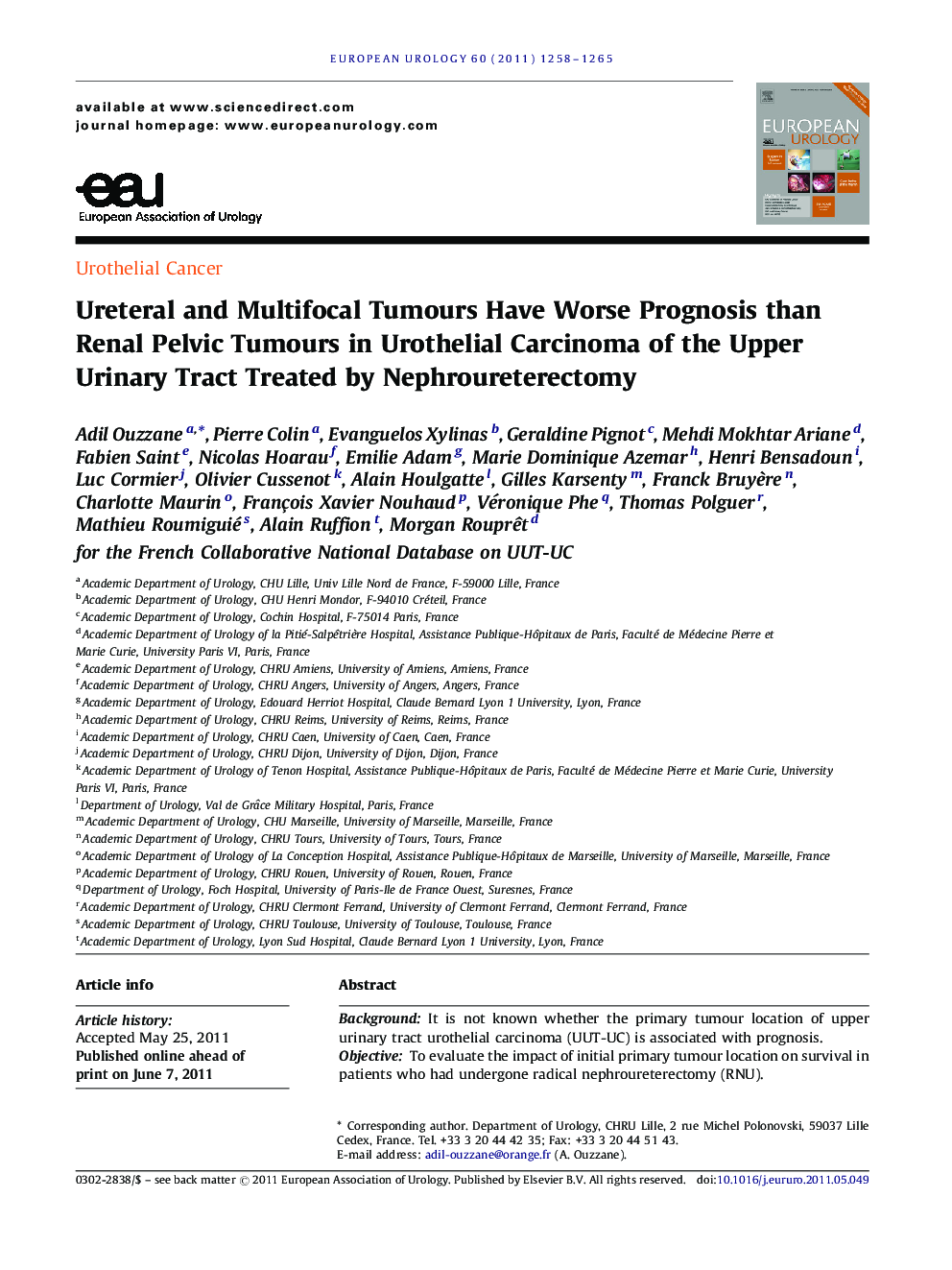| کد مقاله | کد نشریه | سال انتشار | مقاله انگلیسی | نسخه تمام متن |
|---|---|---|---|---|
| 3922954 | 1600011 | 2011 | 8 صفحه PDF | دانلود رایگان |

BackgroundIt is not known whether the primary tumour location of upper urinary tract urothelial carcinoma (UUT-UC) is associated with prognosis.ObjectiveTo evaluate the impact of initial primary tumour location on survival in patients who had undergone radical nephroureterectomy (RNU).Design, setting, and participantsUsing a multi-institutional, retrospective database, we identified 609 patients with UUT-UC who had undergone RNU between 1995 and 2010. Tumour location was categorised as renal pelvis, ureter, or multifocal.InterventionAll patients had undergone RNU.MeasurementsTumour location was tested as a prognostic factor for survival through univariate and multivariable Cox regression analysis.Results and limitationsTumour location was renal pelvis in 317 cases (52%), ureter in 185 cases (30%), and multifocal in 107 cases (18%). Compared to renal pelvic and ureteral tumours, multifocal tumours were more likely to be associated with advanced stages (pT3/pT4; 39%, 30%, and 54%, respectively; p < 0.001) and high-grade disease (53%, 56%, and 76%, respectively; p < 0.001). On multivariable analysis, tumour location was an independent prognostic factor for cancer-specific death, disease recurrence, and metastasis (p < 0.05). The 5-yr cancer-specific death–free survival probability was 86.8% for renal pelvic tumours, 68.9% for ureteral tumours, and 56.8% for multifocal tumours (p < 0.001). The retrospective design of this study was its main limitation.ConclusionsUreteral and multifocal tumours had a worse prognosis than renal pelvic tumours. These findings are not in line with recently published data and should be investigated in a prospective assessment to obtain a definitive statement regarding this matter.
Journal: European Urology - Volume 60, Issue 6, December 2011, Pages 1258–1265